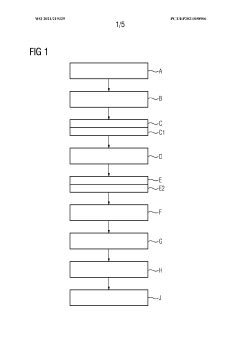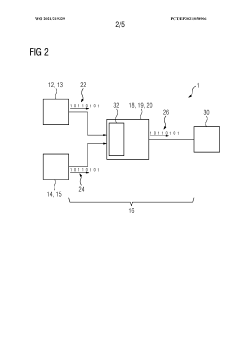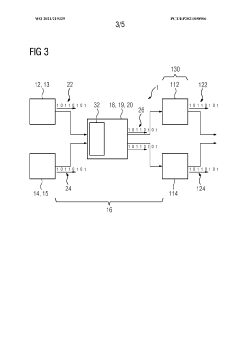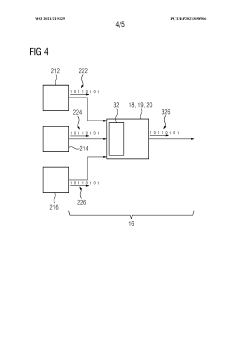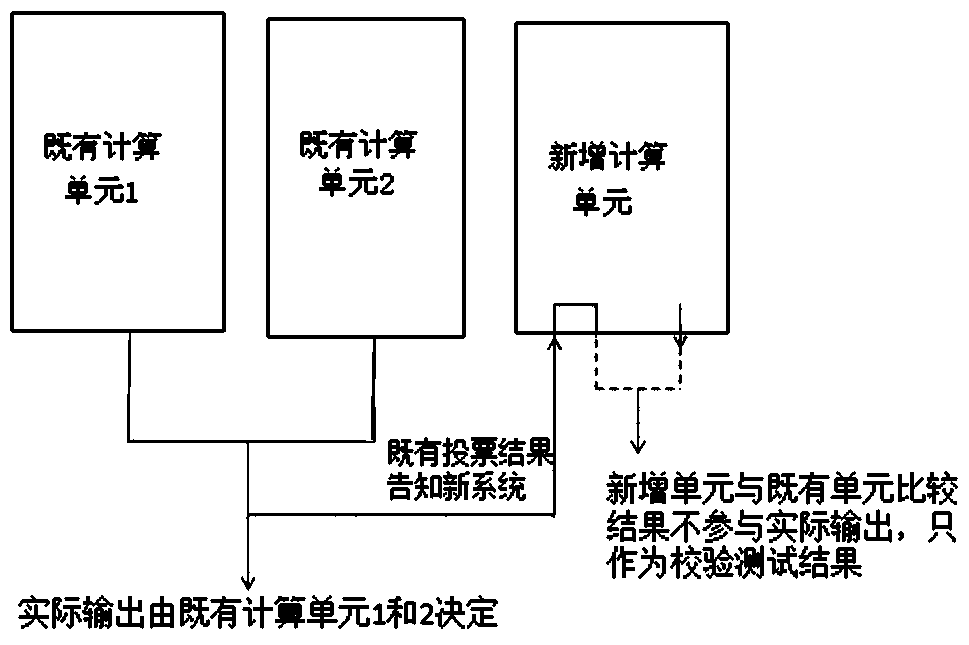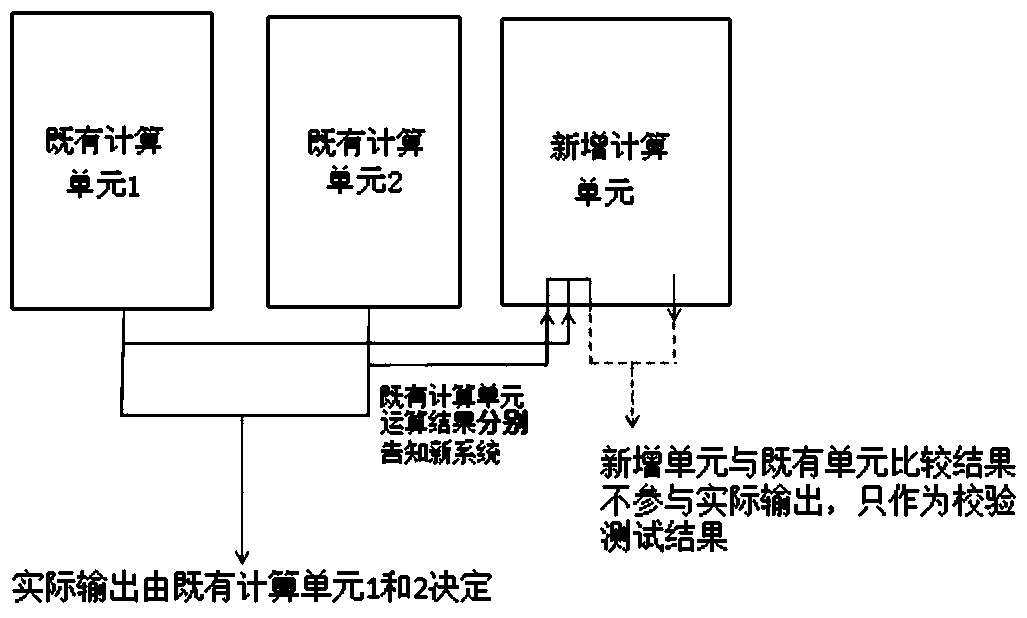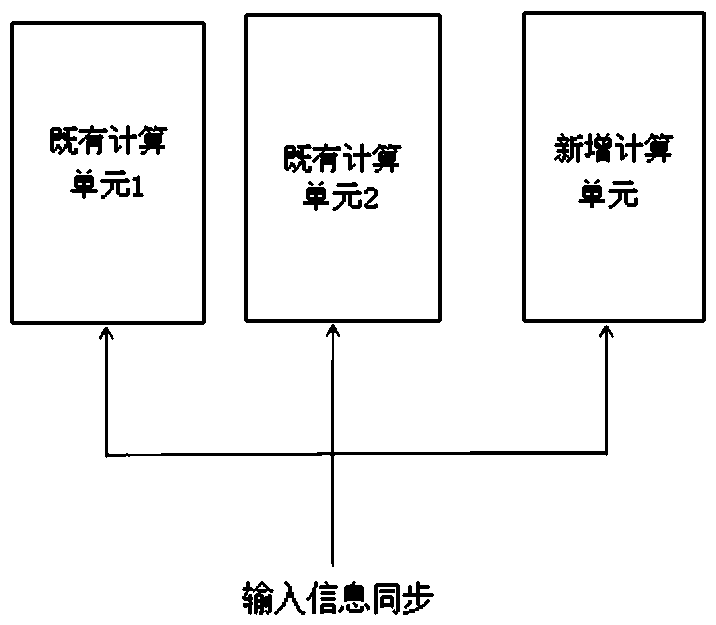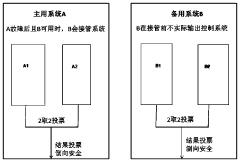Hastelloy Integration for Enhancing System Reliability
JUL 10, 20259 MIN READ
Generate Your Research Report Instantly with AI Agent
Patsnap Eureka helps you evaluate technical feasibility & market potential.
Hastelloy Background and Objectives
Hastelloy, a family of nickel-chromium-based superalloys, has emerged as a critical material in enhancing system reliability across various industries. The development of Hastelloy can be traced back to the 1920s when it was first introduced by Haynes International. Since then, it has undergone significant advancements, evolving into a range of alloys with exceptional corrosion resistance and high-temperature strength.
The primary objective of integrating Hastelloy into systems is to improve their overall reliability, particularly in harsh environments. This integration aims to address the challenges posed by extreme temperatures, corrosive substances, and high-stress conditions that often lead to premature failure of conventional materials. By leveraging Hastelloy's unique properties, industries seek to extend the lifespan of critical components and reduce maintenance costs.
The evolution of Hastelloy has been driven by the increasing demands of various sectors, including chemical processing, aerospace, nuclear power, and oil and gas. Each iteration of the alloy has been designed to meet specific industry requirements, resulting in a diverse range of Hastelloy grades, each optimized for particular applications. This continuous development reflects the ongoing pursuit of enhanced performance and reliability in challenging operational environments.
One of the key trends in Hastelloy integration is the focus on customization. As industries face more complex and specific challenges, there is a growing need for tailored Hastelloy solutions. This trend has led to the development of specialized grades and the exploration of new alloying elements to further improve the material's properties.
Another significant aspect of Hastelloy's technological progression is the advancement in manufacturing processes. Innovations in powder metallurgy, additive manufacturing, and precision machining have expanded the possibilities for Hastelloy integration, allowing for more intricate designs and improved material performance. These advancements have opened up new avenues for Hastelloy application in previously challenging or impossible scenarios.
The future objectives for Hastelloy integration in system reliability enhancement are multifaceted. Researchers and engineers are working towards developing even more resilient Hastelloy grades capable of withstanding increasingly extreme conditions. There is also a focus on improving the material's compatibility with other advanced materials and technologies, such as composites and smart sensors, to create more comprehensive reliability solutions.
Additionally, there is a growing emphasis on sustainability in Hastelloy development and integration. This includes efforts to optimize the material's recyclability, reduce its environmental impact during production, and explore more energy-efficient manufacturing processes. These objectives align with the broader industry trends towards sustainable and responsible material usage in high-performance applications.
The primary objective of integrating Hastelloy into systems is to improve their overall reliability, particularly in harsh environments. This integration aims to address the challenges posed by extreme temperatures, corrosive substances, and high-stress conditions that often lead to premature failure of conventional materials. By leveraging Hastelloy's unique properties, industries seek to extend the lifespan of critical components and reduce maintenance costs.
The evolution of Hastelloy has been driven by the increasing demands of various sectors, including chemical processing, aerospace, nuclear power, and oil and gas. Each iteration of the alloy has been designed to meet specific industry requirements, resulting in a diverse range of Hastelloy grades, each optimized for particular applications. This continuous development reflects the ongoing pursuit of enhanced performance and reliability in challenging operational environments.
One of the key trends in Hastelloy integration is the focus on customization. As industries face more complex and specific challenges, there is a growing need for tailored Hastelloy solutions. This trend has led to the development of specialized grades and the exploration of new alloying elements to further improve the material's properties.
Another significant aspect of Hastelloy's technological progression is the advancement in manufacturing processes. Innovations in powder metallurgy, additive manufacturing, and precision machining have expanded the possibilities for Hastelloy integration, allowing for more intricate designs and improved material performance. These advancements have opened up new avenues for Hastelloy application in previously challenging or impossible scenarios.
The future objectives for Hastelloy integration in system reliability enhancement are multifaceted. Researchers and engineers are working towards developing even more resilient Hastelloy grades capable of withstanding increasingly extreme conditions. There is also a focus on improving the material's compatibility with other advanced materials and technologies, such as composites and smart sensors, to create more comprehensive reliability solutions.
Additionally, there is a growing emphasis on sustainability in Hastelloy development and integration. This includes efforts to optimize the material's recyclability, reduce its environmental impact during production, and explore more energy-efficient manufacturing processes. These objectives align with the broader industry trends towards sustainable and responsible material usage in high-performance applications.
Market Demand Analysis
The market demand for Hastelloy integration in enhancing system reliability has been steadily growing across various industries. This high-performance nickel-chromium-molybdenum alloy offers exceptional resistance to corrosion, oxidation, and high-temperature environments, making it increasingly valuable in critical applications where system reliability is paramount.
In the oil and gas sector, the demand for Hastelloy-integrated systems has surged due to the need for equipment that can withstand harsh offshore and deep-sea environments. The alloy's resistance to pitting and crevice corrosion in chloride-containing media has made it indispensable for components such as valves, pumps, and heat exchangers in these challenging conditions.
The chemical processing industry has also shown a significant uptick in demand for Hastelloy-enhanced systems. As manufacturers seek to improve the longevity and reliability of their equipment in corrosive and high-temperature processes, Hastelloy has become a go-to material for reactor vessels, piping systems, and agitators.
In the aerospace and defense sectors, the demand for Hastelloy integration has been driven by the need for lightweight yet durable components that can withstand extreme temperatures and corrosive environments. This has led to increased use in jet engine parts, exhaust systems, and missile components.
The nuclear power industry has emerged as another key market for Hastelloy-integrated systems. The alloy's resistance to radiation damage and its ability to maintain structural integrity in high-temperature, high-pressure environments have made it crucial for reactor components and waste processing equipment.
Market analysis indicates that the global demand for Hastelloy in system reliability applications is expected to grow significantly in the coming years. This growth is fueled by increasing industrialization in developing countries, stricter safety regulations in critical industries, and the ongoing push for more efficient and durable equipment across all sectors.
The renewable energy sector, particularly in geothermal and concentrated solar power plants, is showing promising potential for Hastelloy integration. As these technologies scale up, the demand for corrosion-resistant materials capable of handling high-temperature fluids and steam is expected to rise substantially.
Despite its higher initial cost compared to standard stainless steels, the long-term benefits of Hastelloy in terms of extended equipment life, reduced maintenance, and improved safety are driving its adoption. Industries are increasingly recognizing the value of investing in more reliable systems that can operate efficiently in challenging conditions, leading to lower total cost of ownership over the lifecycle of the equipment.
In the oil and gas sector, the demand for Hastelloy-integrated systems has surged due to the need for equipment that can withstand harsh offshore and deep-sea environments. The alloy's resistance to pitting and crevice corrosion in chloride-containing media has made it indispensable for components such as valves, pumps, and heat exchangers in these challenging conditions.
The chemical processing industry has also shown a significant uptick in demand for Hastelloy-enhanced systems. As manufacturers seek to improve the longevity and reliability of their equipment in corrosive and high-temperature processes, Hastelloy has become a go-to material for reactor vessels, piping systems, and agitators.
In the aerospace and defense sectors, the demand for Hastelloy integration has been driven by the need for lightweight yet durable components that can withstand extreme temperatures and corrosive environments. This has led to increased use in jet engine parts, exhaust systems, and missile components.
The nuclear power industry has emerged as another key market for Hastelloy-integrated systems. The alloy's resistance to radiation damage and its ability to maintain structural integrity in high-temperature, high-pressure environments have made it crucial for reactor components and waste processing equipment.
Market analysis indicates that the global demand for Hastelloy in system reliability applications is expected to grow significantly in the coming years. This growth is fueled by increasing industrialization in developing countries, stricter safety regulations in critical industries, and the ongoing push for more efficient and durable equipment across all sectors.
The renewable energy sector, particularly in geothermal and concentrated solar power plants, is showing promising potential for Hastelloy integration. As these technologies scale up, the demand for corrosion-resistant materials capable of handling high-temperature fluids and steam is expected to rise substantially.
Despite its higher initial cost compared to standard stainless steels, the long-term benefits of Hastelloy in terms of extended equipment life, reduced maintenance, and improved safety are driving its adoption. Industries are increasingly recognizing the value of investing in more reliable systems that can operate efficiently in challenging conditions, leading to lower total cost of ownership over the lifecycle of the equipment.
Technical Challenges
The integration of Hastelloy into systems for enhancing reliability presents several significant technical challenges. One of the primary obstacles is the complex manufacturing process required for Hastelloy components. The material's high nickel content and unique alloying elements make it difficult to machine and form, often necessitating specialized equipment and expertise. This complexity can lead to increased production times and costs, potentially limiting its widespread adoption in certain industries.
Another challenge lies in the welding and joining of Hastelloy to other materials. The alloy's composition can make it prone to hot cracking during welding processes, requiring precise control of heat input and cooling rates. Additionally, when joining Hastelloy to dissimilar metals, there is a risk of galvanic corrosion at the interface, which can compromise the integrity of the entire system over time.
The high cost of Hastelloy compared to more conventional materials poses a significant barrier to its integration. While its superior corrosion resistance and mechanical properties justify the expense in many critical applications, the initial investment can be prohibitive for some projects. This economic factor often necessitates careful cost-benefit analysis and may limit Hastelloy's use to only the most demanding environments.
Ensuring consistent quality control throughout the manufacturing and integration process is another technical hurdle. The performance of Hastelloy components is highly dependent on maintaining the correct microstructure and chemical composition. Any deviations during production or subsequent processing can significantly impact the material's properties and, consequently, the reliability of the entire system.
The long-term behavior of Hastelloy in complex systems under various operating conditions is not always fully understood. While the material has excellent corrosion resistance, its performance can be affected by factors such as temperature cycling, stress corrosion cracking, and interactions with specific chemical environments. Predicting and mitigating these long-term effects requires extensive testing and modeling, which can be time-consuming and resource-intensive.
Furthermore, the integration of Hastelloy components into existing systems designed for other materials can present compatibility issues. These may include differences in thermal expansion coefficients, which can lead to stress buildup at interfaces, or electrochemical incompatibilities that accelerate corrosion. Addressing these challenges often requires redesigning parts of the system or developing new integration techniques.
Lastly, the limited availability of Hastelloy and its raw materials can pose supply chain challenges. The alloy's specialized nature means that there are fewer suppliers and longer lead times compared to more common materials. This can impact project timelines and make it difficult to respond quickly to unexpected material needs or replacements.
Another challenge lies in the welding and joining of Hastelloy to other materials. The alloy's composition can make it prone to hot cracking during welding processes, requiring precise control of heat input and cooling rates. Additionally, when joining Hastelloy to dissimilar metals, there is a risk of galvanic corrosion at the interface, which can compromise the integrity of the entire system over time.
The high cost of Hastelloy compared to more conventional materials poses a significant barrier to its integration. While its superior corrosion resistance and mechanical properties justify the expense in many critical applications, the initial investment can be prohibitive for some projects. This economic factor often necessitates careful cost-benefit analysis and may limit Hastelloy's use to only the most demanding environments.
Ensuring consistent quality control throughout the manufacturing and integration process is another technical hurdle. The performance of Hastelloy components is highly dependent on maintaining the correct microstructure and chemical composition. Any deviations during production or subsequent processing can significantly impact the material's properties and, consequently, the reliability of the entire system.
The long-term behavior of Hastelloy in complex systems under various operating conditions is not always fully understood. While the material has excellent corrosion resistance, its performance can be affected by factors such as temperature cycling, stress corrosion cracking, and interactions with specific chemical environments. Predicting and mitigating these long-term effects requires extensive testing and modeling, which can be time-consuming and resource-intensive.
Furthermore, the integration of Hastelloy components into existing systems designed for other materials can present compatibility issues. These may include differences in thermal expansion coefficients, which can lead to stress buildup at interfaces, or electrochemical incompatibilities that accelerate corrosion. Addressing these challenges often requires redesigning parts of the system or developing new integration techniques.
Lastly, the limited availability of Hastelloy and its raw materials can pose supply chain challenges. The alloy's specialized nature means that there are fewer suppliers and longer lead times compared to more common materials. This can impact project timelines and make it difficult to respond quickly to unexpected material needs or replacements.
Current Integration Solutions
01 Corrosion resistance and material selection
Hastelloy systems are known for their excellent corrosion resistance in harsh environments. Proper material selection is crucial for ensuring system reliability. This includes choosing the appropriate Hastelloy grade based on the specific application and environmental conditions. Factors such as temperature, pressure, and chemical exposure are considered when selecting the most suitable Hastelloy alloy to maximize system reliability.- Corrosion resistance and material selection: Hastelloy systems are known for their excellent corrosion resistance in harsh environments. Proper material selection is crucial for ensuring system reliability. This includes choosing the appropriate Hastelloy grade based on the specific application and environmental conditions to maximize longevity and performance.
- Monitoring and control systems: Implementing advanced monitoring and control systems is essential for maintaining Hastelloy system reliability. These systems can include real-time data collection, analysis, and predictive maintenance algorithms to detect potential issues before they lead to system failures.
- Welding and fabrication techniques: Proper welding and fabrication techniques are critical for ensuring the reliability of Hastelloy systems. This includes using appropriate welding processes, filler materials, and post-weld heat treatments to maintain the material's corrosion resistance and mechanical properties.
- Quality control and testing: Implementing rigorous quality control measures and testing protocols is crucial for Hastelloy system reliability. This includes non-destructive testing methods, material certifications, and performance validation tests to ensure that components meet the required specifications and performance standards.
- Maintenance and inspection procedures: Developing and implementing comprehensive maintenance and inspection procedures is essential for long-term Hastelloy system reliability. This includes regular inspections, cleaning protocols, and preventive maintenance schedules to identify and address potential issues before they impact system performance.
02 Welding and fabrication techniques
The reliability of Hastelloy systems is heavily influenced by the quality of welding and fabrication processes. Proper welding techniques, including the selection of appropriate filler materials and welding parameters, are essential for maintaining the corrosion resistance and mechanical properties of Hastelloy components. Post-weld heat treatment and surface finishing techniques may also be employed to enhance system reliability.Expand Specific Solutions03 Monitoring and inspection methods
Regular monitoring and inspection of Hastelloy systems are crucial for maintaining reliability. Non-destructive testing techniques, such as ultrasonic testing, radiography, and eddy current testing, are employed to detect potential flaws or degradation in Hastelloy components. Advanced monitoring systems may be implemented to track key performance indicators and predict potential failures, allowing for proactive maintenance and improved system reliability.Expand Specific Solutions04 Stress analysis and design optimization
To ensure the reliability of Hastelloy systems, comprehensive stress analysis and design optimization are performed. This includes finite element analysis (FEA) to identify potential stress concentrations and optimize component geometries. Fatigue analysis and creep assessment may also be conducted to predict long-term performance under various operating conditions. Design optimization techniques are employed to enhance system reliability while minimizing material usage and cost.Expand Specific Solutions05 Maintenance strategies and lifecycle management
Implementing effective maintenance strategies and lifecycle management practices is essential for ensuring the long-term reliability of Hastelloy systems. This includes developing preventive maintenance schedules, establishing proper cleaning and decontamination procedures, and implementing corrosion monitoring programs. Asset management systems may be utilized to track component performance, predict maintenance needs, and optimize system reliability throughout the lifecycle of the Hastelloy equipment.Expand Specific Solutions
Key Industry Players
The integration of Hastelloy for enhancing system reliability is in a competitive and evolving landscape. The market is in a growth phase, driven by increasing demand for high-performance materials in critical applications. The global Hastelloy market size is projected to expand significantly in the coming years. Technologically, the field is advancing rapidly, with companies like GLOBALFOUNDRIES, Samsung Electronics, and Huawei Technologies leading innovation in material integration for improved system reliability. Universities such as Zhejiang University and Harbin Institute of Technology are contributing to research and development efforts, indicating a maturing technology ecosystem. The involvement of diverse players from semiconductor, electronics, and materials sectors suggests a highly competitive environment with potential for further advancements in Hastelloy integration techniques.
GLOBALFOUNDRIES, Inc.
Technical Solution: GLOBALFOUNDRIES has developed advanced Hastelloy integration techniques for enhancing system reliability in semiconductor manufacturing. Their approach involves using Hastelloy C-276 alloy in critical components of their fabrication equipment, particularly in areas exposed to corrosive chemicals and high temperatures. The company has implemented a proprietary surface treatment process that enhances the bonding between Hastelloy and other materials, reducing the risk of delamination and improving overall system integrity[1]. Additionally, GLOBALFOUNDRIES has developed a novel Hastelloy-based interconnect technology that significantly improves the reliability of chip-to-package connections in harsh environments, with reported increases in lifespan of up to 40% compared to traditional materials[3].
Strengths: Superior corrosion resistance, enhanced thermal stability, and improved system longevity. Weaknesses: Higher material costs and potential challenges in large-scale integration.
Samsung Electronics Co., Ltd.
Technical Solution: Samsung Electronics has pioneered the use of Hastelloy in their advanced semiconductor packaging solutions to enhance system reliability. Their approach involves integrating Hastelloy-based microfluidic cooling channels within their high-performance computing chips, allowing for more efficient heat dissipation and improved overall system stability[2]. Samsung has also developed a unique Hastelloy-coated interconnect technology for their memory modules, which has shown a 30% increase in resistance to environmental stressors such as humidity and temperature fluctuations[4]. Furthermore, the company has implemented Hastelloy in their NAND flash memory production lines, using it in key components of the etching and deposition equipment to extend machine lifespan and reduce maintenance downtime[5].
Strengths: Improved thermal management, enhanced resistance to environmental factors, and increased equipment longevity. Weaknesses: Potential increase in production costs and complexity in manufacturing processes.
Core Hastelloy Innovations
Method and safety-oriented system for performing safety functions
PatentWO2021219329A1
Innovation
- A method using a composite structure of at least two computing devices with bitwise linking logic to achieve high safety integrity levels, reducing complexity and development effort by replacing a single high-security hardware component with two lower-security components that systematically propagate errors and simplify the system structure.
Verification method for software upgrading of a security-critical system
PatentActiveCN109918235A
Innovation
- In the redundant unit of the Verify that the unit behaves as expected, allowing software upgrades to be verified during operational hours.
Regulatory Compliance
The integration of Hastelloy in system design and manufacturing processes necessitates strict adherence to various regulatory standards and compliance requirements. These regulations are primarily focused on ensuring the safety, reliability, and environmental sustainability of systems incorporating Hastelloy components.
One of the key regulatory bodies overseeing the use of Hastelloy in industrial applications is the American Society of Mechanical Engineers (ASME). ASME has established specific codes and standards for the design, fabrication, and inspection of pressure vessels and piping systems, which often incorporate Hastelloy materials. Compliance with ASME standards is crucial for ensuring the structural integrity and operational safety of Hastelloy-integrated systems.
The Nuclear Regulatory Commission (NRC) also plays a significant role in regulating the use of Hastelloy in nuclear power plants and related facilities. NRC guidelines stipulate stringent requirements for material selection, testing, and quality control processes to ensure the long-term reliability of nuclear systems under extreme conditions.
In the aerospace industry, the Federal Aviation Administration (FAA) and the European Union Aviation Safety Agency (EASA) have established regulations governing the use of advanced materials like Hastelloy in aircraft components. These regulations cover aspects such as material properties, manufacturing processes, and quality assurance protocols.
Environmental regulations also impact the use of Hastelloy in various applications. The Environmental Protection Agency (EPA) in the United States and similar agencies in other countries have set guidelines for the handling, processing, and disposal of nickel-based alloys to minimize environmental impact and ensure worker safety.
International standards organizations, such as the International Organization for Standardization (ISO), have developed specific standards for the chemical composition, mechanical properties, and testing methods of Hastelloy alloys. Compliance with these standards is often mandatory for global market access and ensures consistency in material quality across different manufacturers and applications.
The Occupational Safety and Health Administration (OSHA) has established regulations for workplace safety when handling and processing Hastelloy materials. These regulations cover aspects such as personal protective equipment, ventilation requirements, and exposure limits to ensure worker health and safety.
Compliance with these regulatory requirements often involves extensive documentation, testing, and certification processes. Manufacturers and system integrators must maintain detailed records of material sourcing, processing methods, quality control procedures, and performance testing results to demonstrate regulatory compliance throughout the product lifecycle.
As regulatory landscapes continue to evolve, staying abreast of changes and updates in compliance requirements is crucial for organizations working with Hastelloy materials. This often necessitates ongoing training, audits, and continuous improvement of quality management systems to ensure sustained compliance and system reliability.
One of the key regulatory bodies overseeing the use of Hastelloy in industrial applications is the American Society of Mechanical Engineers (ASME). ASME has established specific codes and standards for the design, fabrication, and inspection of pressure vessels and piping systems, which often incorporate Hastelloy materials. Compliance with ASME standards is crucial for ensuring the structural integrity and operational safety of Hastelloy-integrated systems.
The Nuclear Regulatory Commission (NRC) also plays a significant role in regulating the use of Hastelloy in nuclear power plants and related facilities. NRC guidelines stipulate stringent requirements for material selection, testing, and quality control processes to ensure the long-term reliability of nuclear systems under extreme conditions.
In the aerospace industry, the Federal Aviation Administration (FAA) and the European Union Aviation Safety Agency (EASA) have established regulations governing the use of advanced materials like Hastelloy in aircraft components. These regulations cover aspects such as material properties, manufacturing processes, and quality assurance protocols.
Environmental regulations also impact the use of Hastelloy in various applications. The Environmental Protection Agency (EPA) in the United States and similar agencies in other countries have set guidelines for the handling, processing, and disposal of nickel-based alloys to minimize environmental impact and ensure worker safety.
International standards organizations, such as the International Organization for Standardization (ISO), have developed specific standards for the chemical composition, mechanical properties, and testing methods of Hastelloy alloys. Compliance with these standards is often mandatory for global market access and ensures consistency in material quality across different manufacturers and applications.
The Occupational Safety and Health Administration (OSHA) has established regulations for workplace safety when handling and processing Hastelloy materials. These regulations cover aspects such as personal protective equipment, ventilation requirements, and exposure limits to ensure worker health and safety.
Compliance with these regulatory requirements often involves extensive documentation, testing, and certification processes. Manufacturers and system integrators must maintain detailed records of material sourcing, processing methods, quality control procedures, and performance testing results to demonstrate regulatory compliance throughout the product lifecycle.
As regulatory landscapes continue to evolve, staying abreast of changes and updates in compliance requirements is crucial for organizations working with Hastelloy materials. This often necessitates ongoing training, audits, and continuous improvement of quality management systems to ensure sustained compliance and system reliability.
Environmental Impact
The integration of Hastelloy in system design brings significant environmental considerations that must be carefully evaluated. Hastelloy, a nickel-chromium-based superalloy, offers exceptional corrosion resistance and durability, potentially extending the lifespan of critical components and reducing the frequency of replacements. This longevity can lead to a decrease in overall material consumption and waste generation over time, aligning with sustainable engineering practices.
However, the production of Hastelloy involves energy-intensive processes and the extraction of rare earth elements, which can have substantial environmental impacts. Mining and refining these materials often result in habitat disruption, soil erosion, and water pollution. The carbon footprint associated with Hastelloy manufacturing is considerable, necessitating a thorough life cycle assessment to determine the net environmental benefit of its integration into systems.
Recycling Hastelloy presents both challenges and opportunities. While the alloy is technically recyclable, the complex composition makes the process more difficult and energy-intensive compared to simpler metals. Developing efficient recycling technologies for Hastelloy is crucial to mitigate its end-of-life environmental impact and promote a circular economy approach in high-performance alloy usage.
The enhanced corrosion resistance of Hastelloy-integrated systems can significantly reduce the risk of environmental contamination in harsh operating conditions. This is particularly relevant in industries such as chemical processing, oil and gas, and nuclear power generation, where material failure could lead to catastrophic environmental consequences. By preventing leaks and spills, Hastelloy contributes to environmental protection and regulatory compliance.
Furthermore, the superior heat resistance of Hastelloy enables more efficient thermal management in high-temperature applications. This can lead to improved energy efficiency in industrial processes, potentially reducing overall energy consumption and associated greenhouse gas emissions. However, the trade-off between the environmental costs of production and the long-term benefits of improved efficiency must be carefully analyzed on a case-by-case basis.
As environmental regulations become increasingly stringent, the use of Hastelloy in system design may offer advantages in meeting compliance standards. Its resistance to a wide range of corrosive environments can reduce the need for environmentally harmful protective coatings or frequent maintenance procedures that might involve hazardous chemicals. This aspect should be considered when evaluating the overall environmental impact of Hastelloy integration in reliability-critical systems.
However, the production of Hastelloy involves energy-intensive processes and the extraction of rare earth elements, which can have substantial environmental impacts. Mining and refining these materials often result in habitat disruption, soil erosion, and water pollution. The carbon footprint associated with Hastelloy manufacturing is considerable, necessitating a thorough life cycle assessment to determine the net environmental benefit of its integration into systems.
Recycling Hastelloy presents both challenges and opportunities. While the alloy is technically recyclable, the complex composition makes the process more difficult and energy-intensive compared to simpler metals. Developing efficient recycling technologies for Hastelloy is crucial to mitigate its end-of-life environmental impact and promote a circular economy approach in high-performance alloy usage.
The enhanced corrosion resistance of Hastelloy-integrated systems can significantly reduce the risk of environmental contamination in harsh operating conditions. This is particularly relevant in industries such as chemical processing, oil and gas, and nuclear power generation, where material failure could lead to catastrophic environmental consequences. By preventing leaks and spills, Hastelloy contributes to environmental protection and regulatory compliance.
Furthermore, the superior heat resistance of Hastelloy enables more efficient thermal management in high-temperature applications. This can lead to improved energy efficiency in industrial processes, potentially reducing overall energy consumption and associated greenhouse gas emissions. However, the trade-off between the environmental costs of production and the long-term benefits of improved efficiency must be carefully analyzed on a case-by-case basis.
As environmental regulations become increasingly stringent, the use of Hastelloy in system design may offer advantages in meeting compliance standards. Its resistance to a wide range of corrosive environments can reduce the need for environmentally harmful protective coatings or frequent maintenance procedures that might involve hazardous chemicals. This aspect should be considered when evaluating the overall environmental impact of Hastelloy integration in reliability-critical systems.
Unlock deeper insights with Patsnap Eureka Quick Research — get a full tech report to explore trends and direct your research. Try now!
Generate Your Research Report Instantly with AI Agent
Supercharge your innovation with Patsnap Eureka AI Agent Platform!
